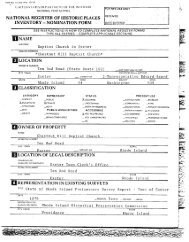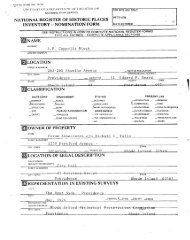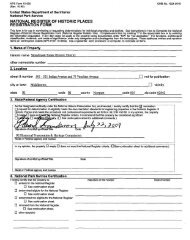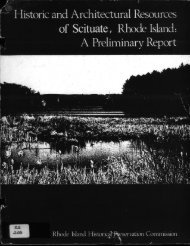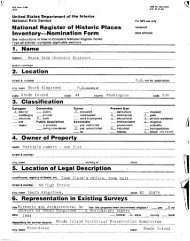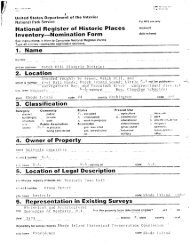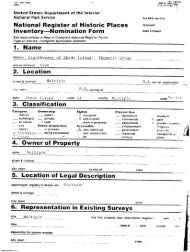1 Dr. Jonathan Prude, Emory University “The Great Transformation ...
1 Dr. Jonathan Prude, Emory University “The Great Transformation ...
1 Dr. Jonathan Prude, Emory University “The Great Transformation ...
You also want an ePaper? Increase the reach of your titles
YUMPU automatically turns print PDFs into web optimized ePapers that Google loves.
11the <strong>Dr</strong>aper brothers who by midcentury had taken over most of the textile operations inHopedale. So too, these textile mills were commonly surrounded by ancillary structures--workers’ residences and outbuldings of various sorts--that comprised sub-towns (so-calledfactory villages) constituting the most thickly gathered constellations of people for miles around(Figure #5).. Which in turn meant these mills typically boasted the largest paid laborforces inhinterland communities. Unlike the limited rosters of individuals working for employers in ruraltownships before the factories, textile mills introduced substantial assemblages of wagedworkers. And so the corollary. Given the considerable number of individuals toiling directly forthem, the proprietors and managers of these establishments emerged as wielding a new kind ofconcentrated wage-dispensing economic power. And of course this power often fused withconcentrated wealth. Even as we acknowledge industrialization’s capacity to widen--democratize--distributions of manufactured goods, we need to realize that the authority attachingto the mills’ large scale employment commonly joined with the appreciable personal affluence ofmill proprietors and hence the rise of newly stark economic hierarchies inside rural communities.All these novelties of scale were noticed by townspeople outside the mill villages. Andtaken together these departures from familiar norms could be jarring. That they were not morejarring is explained by the notions we’ve already noticed circulating through the culture andproposing that industrialization had at least the potential to benefit the Yankee countryside. Onthe ground, however, in the immediate confines of rural townships, what also made the mills lessdisconcerting was the way they often presented themselves as supportive participants in localaffairs. What eased their integration into rural communities, in other words, was that the millssupplemented the jobs and markets they offered with hefty tax payments and sponsorship offacilities open to all townspeople.But amidst the civic bonhomie lurked questions. Could a rural township host majormanufacturing ventures and not be dominated by them? Would such domination be wrong? Orput differently: Could the kind of influence textile mill proprietors enjoyed over their factory







